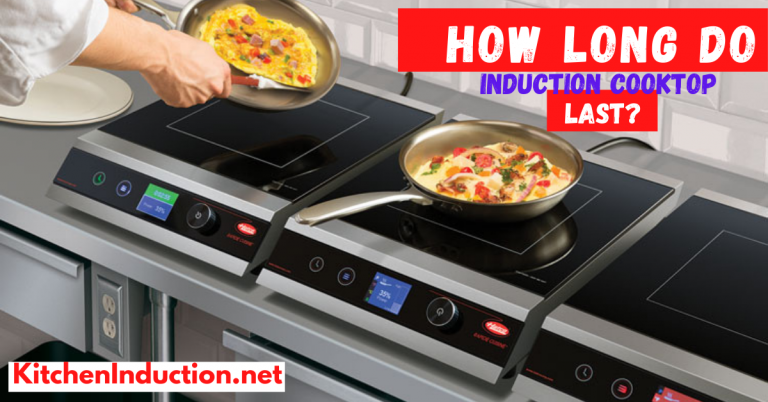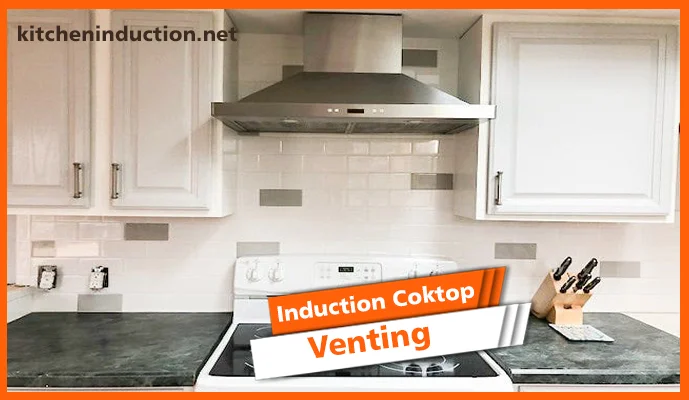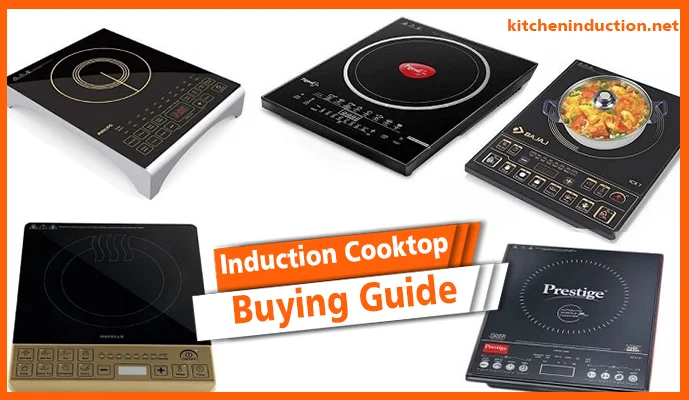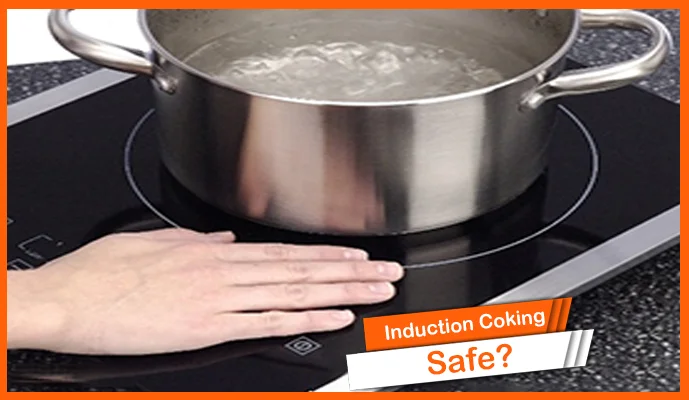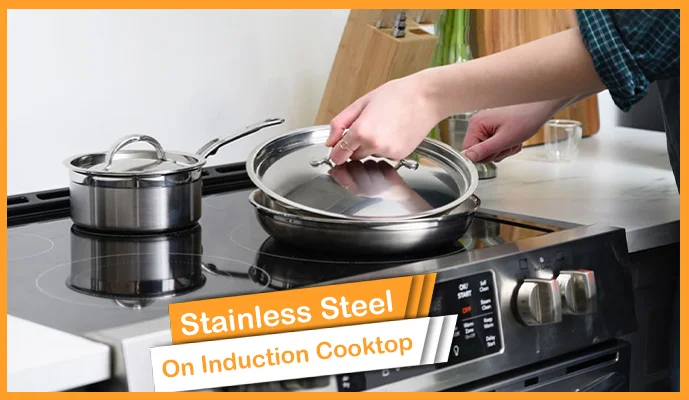How to Clean Induction Cooktop (Top Induction Hob Cleaner Tips)
When it comes to a modern kitchen, there might be induction or ceramic hob installed for cooking. If we talk about induction cooktops, they are efficient, safe for families, and have a sleek look in the kitchen. Moreover, such cooktops are totally different from others available in the market as they directly heat the cooktop, makes it a popular choice. They look so classy, but when it comes to clean induction cooktops, many people don’t know how to do it.
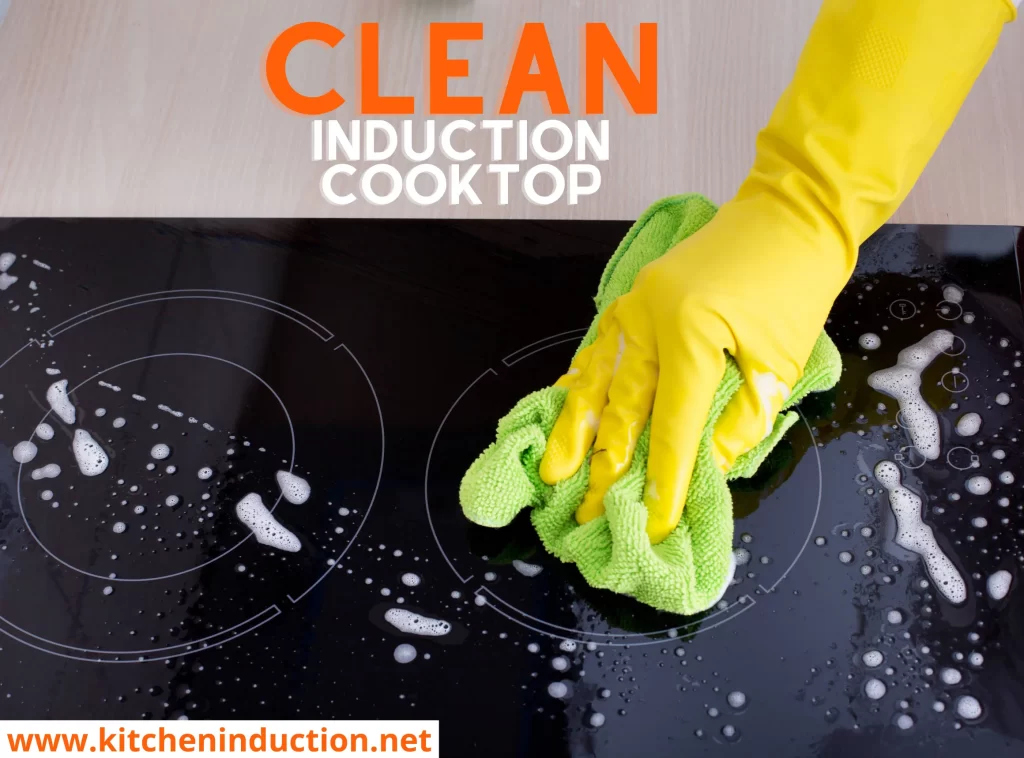
The induction cooktops are notoriously prone to scratches and scuffs when you choose the wrong cleaning products. The induction cooktop heats up directly instead of relying on electrical, gas, or thermal heated element. Before talking about cleaning the induction cooktop, let’s know how does an induction cooktop work.
Contents
Induction Cooktop Working
The cooking mechanism of the induction cooktop is very simple but needs to understand. Under the cooking surface, there is a copper coil, and an alternating current is passed through this coil. As a result, a magnetic field is created through the vessel to produce heat. When you put the induction-supported pot on the cooktop, the heat is created in the pot and used to cook the food.
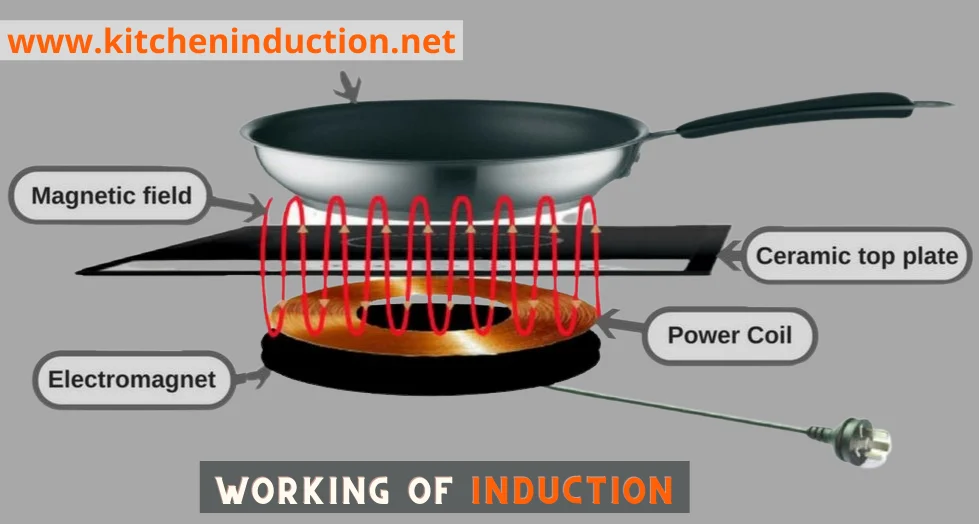
Here one thing is to clear that the cooking pot should be magnetic friendly. This means it should contain ferrous metal such as cast iron or stainless steel. The metal in the cooking pot concentrates the current to produce heat in the pot. Many induction cooktops can’t produce heat in copper or aluminum vessels because these metals cannot create magnetic fields.
Benefits of Using Induction Cooktop
The induction cooktop is more beneficial, and energy-efficient as compared to the electric or gas cooktop as much energy goes to waste. In this type of cooktop, only that part is heated up where the utensil is kept to get heated up. And the other surface remains cool; it means no chances of burning.
Cooking at an induction cooktop reduces the time up to 50%. Moreover, the biggest safety advantage is it can be turned on and off quickly. It provides heat for a longer time and no danger of fire as compared to electric or gas cooktops.
The induction hob offers efficient control over temperatures and helps in efficient cooking. Moreover, it offers to control the cooking and minimizes the chances of undercooking and over-cooking. Since it doesn’t get too hot so cleaning the cooktop is very easy.
Cleaning Induction Cooktop
The induction hobs consist of a glass-ceramic surface and suffer from scratches apart from spills. As time passes, if we don’t clean the stove, it will not work properly as there are stains over its surface. The heat production and the magnetic field can get hampered due to stains. Some stains stay on the surface and can damage the cooktop.
Many people fear there will be scratches if they clean the induction stove by themselves. If you want to know how to clean induction cooktop, there are many techniques for this purpose. If your induction cooktop is cleaned well, it will give you a feeling like a newly purchased unit. However, if it is dirty and has scratches, it may produce noise when you put cookware on it, and that will be frustrating for you.
Precautions to Clean the Induction Hob
A very important thing to perform before cleaning the induction cooktop is to switch it off. It could be harmless if you do cleaning while the induction is on. So, always switch off the cooktop to save yourself from any unnecessary burns. It is better to be safe than your wristwatch or adornments causes burns.

Before starting the cleaning process, let the induction cool down (though it comes to normal temperature right after turning the electricity off). We recommend not to use any cleaning chemicals on the hot plate as the fumes arising can cause harm to your health. Moreover, always wipe the bottom of the cookware before placing it on the induction. It is a good habit not to overfill the pans and pots to avoid spillage.
Avoid to Use on Induction
The following things are prohibited from using on inductions:
Cleaning Induction Every Day
Since the inductions have a glass surface, so it is better to use a soft sponge or soft cloth. If any food crumb or spills happen on the induction surface, wait for the induction to cool down. When it cools down, use a soft sponge or damp cloth to wipe it off and clean induction cooktop. Doing this will save the glass surface from hardening the food on it.
You can also use a special cooktop cleaner cream in a small amount to clean the surface. Putting the cream on the surface, use a damp cloth or soft sponge and rub the cream on the surface until it looks clean. Now, use a dry cloth or towel to wipe off the moisture.
It’s a good habit to clean the give the top of the induction cooktop a rapid clean when it is clean and not too much dirty. Doing this will ensure not to have extensive cleaning after dirt piles up.
How to Clean Very Dirty Inductions:
To clean the very dirty inductions, first of all, wipe off all the grimes with a damp cloth. Now it’s time to remove the crusted food residue. For this purpose, use a scraper and wipe it gently at an angle of 45-degree. While wiping, don’t do it with too much pressure as it can cause scratches. Always use such a scraper that is specially designed for ceramic and glass.
White vinegar is also a good option for hard water stains and smudges. For cleaning, dab a clean cloth in white vinegar and rub the area. Now, wipe the surface with a damp paper towel. Repeat the whole process until you remove all the stains from the surface.
You can also use specialized cooktop cleaning creams to clean induction cooktop. For this purpose, spread the cream on the cooktop surface, use a damp cleaning pad and rub on the surface with cream. Now, it’s time to wait and then use a dry towel or cloth to remove the excessive moisture. You can also use a toothbrush to rub the cream on the glass surface.
On the other parts of the induction, which have not glass-like surfaces (such as stainless steel), you can use soapy water to clean them. Apply the soapy water and clean it with a toothbrush or soft cloth. It is recommended that the cleaner should be chlorine-free and non-abrasive to avoid scratches and corrosion.
Cleaning the cooktop surface with toothpaste is not only inexpensive but also a very handy technique. It’s a home technique where you can use regular toothpaste for cleaning the induction. To start the cleaning process, spread a good amount of toothpaste with your fingers.
Now, add a few drops of water over toothpaste and rub it with a damp cleaning pad or cloth. You can apply it to the glass area as well as the steel area of the induction. Continue rubbing until the stains go away. After that, use a dry cloth to wipe away the moisture.
It is one of the easiest techniques used to clean the induction. In this technique, all you need is to use cloth rags and hot soapy water. Generally, the soapy water is made with a combination of water and regular dishwashing liquid.
First of all, to start the cleaning process, soak the rag in hot soapy water for a while. Now, spread a good amount of soda all across the induction surface. Squeeze the rags in such a way that they should seem wet but not soggy. Place all the rags over the induction surface and wait at least 15 minutes. This time could be increased if the surface is too dirty.
After time completion, rub the surface gently and remove the stains.
It is another simple home technique used to clean the induction. In this technique, a 50-50 solution of water and vinegar is made and sprayed on the induction surface. Then leave it for some time to absorb.
After some time, you can wipe it with a soft damp cloth. Now, it’s time to spread a good amount of baking soda over the vinegar and leave it for 15-20 minutes. After that, clean it with a cleaning scrub or sponge or damp cloth. You can also use a soft cloth to wipe out all the remedies.
Remove Hard Stains From Induction Stoves
First of all, remove all the weak residues with a wet towel or plastic scraper. However, before starting the process, make sure the induction is cool down. If it doesn’t, it can burn the plastic that is harder to remove.
You can use a cleaning cream with a scrubbing pad to scrub away all the burnt residues. If the burnt residue is stubborn, then use a razor scrapper that is specially designed for glass surfaces. Hold this razor scraper at 45 degrees angle and gently scrape away. The burnt residue can also be removed with vinegar and baking soda.
It is important to know how you can remove melted sugar and melted plastic as both are very hard to remove. Both the stains can permanently damage the glass surface of the induction cooktop. The best strategy to remove the melted plastic and sugary spills is to wear the oven mitts and remove both remedies on a hot induction surface.
To start the process:
- Switch off the induction
- Wear the oven mitts and use a razor blade to remove melted stuff at an angle of 45 degrees
- After doing this process, let the surface cool down
- Use a cleaning cream and soft cloth as mentioned in the above methods
Wrapping Up:
While removing the utensils, always lift them instead of sliding them across the glass surface. In this way, the glass surface will remain surface from scratches and marks. Don’t use uncoated cast iron pans, aluminum, or copper cookware because they leave marks on the glass surface that is hard to remove and make difficult to clean induction cooktop. Moreover, ridges designed on the bottom of the pan and rough-edged utensils are the main causes of marks and scratches.

